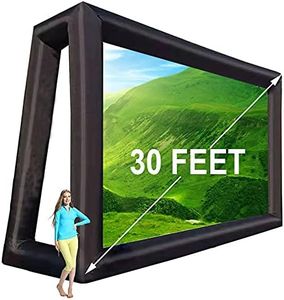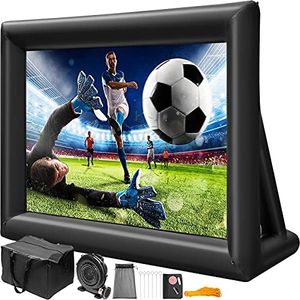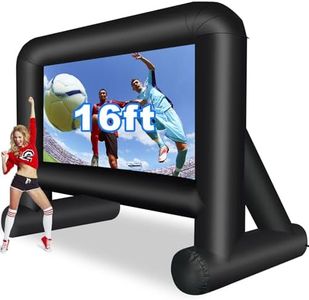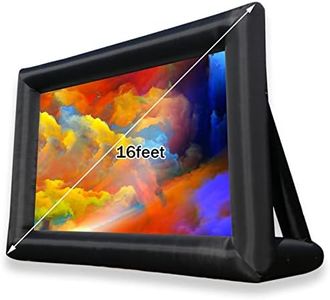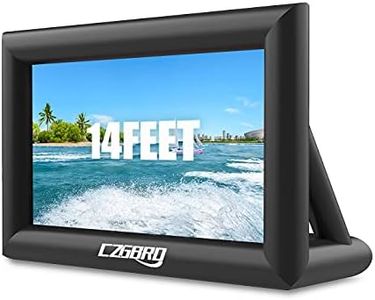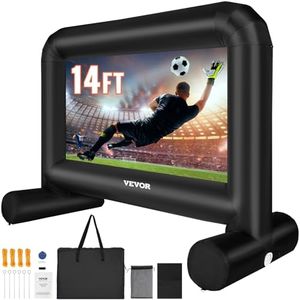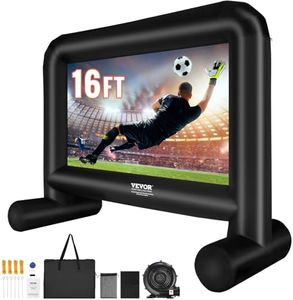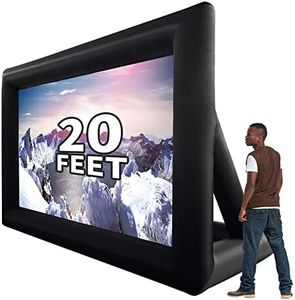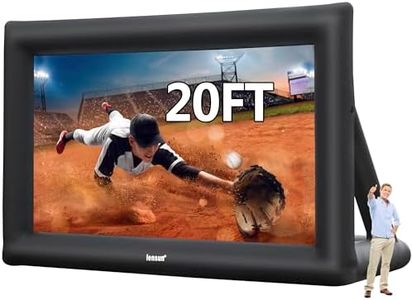We Use CookiesWe use cookies to enhance the security, performance,
functionality and for analytical and promotional activities. By continuing to browse this site you
are agreeing to our privacy policy
10 Best Inflatable Projector Screen
From leading brands and best sellers available on the web.Buying Guide for the Best Inflatable Projector Screen
Choosing an inflatable projector screen can enhance your movie nights, outdoor gatherings, or presentations. The main idea is to find a screen that fits your environment, meets your picture quality expectations, and is easy to set up and maintain. Understanding certain features will help you focus on what matters most for your viewing needs.Screen SizeScreen size refers to the diagonal measurement of the actual viewing area and is crucial because it determines how many people can comfortably see the projection and how immersive the experience feels. Smaller screens (between 10 and 14 feet) work well for intimate settings like backyard movie nights with a few friends, while medium screens (15 to 19 feet) are suited for slightly larger gatherings such as birthday parties. Large screens (20 feet and above) are best for large audiences or community events. Pick a size that suits the number of viewers and the available space you’ll be setting up in—too big can overwhelm a small yard, while too small can feel underwhelming in an open space.
Material QualityThis refers to the type of fabric used for the projection surface. Better materials provide a smoother, brighter, and more consistent image. Vinyl and oxford fabric are popular options; vinyl is easy to clean and fairly durable, while oxford cloth is lightweight and breathable. If you want rich colors and high image clarity, look for screens made from smooth, wrinkle-resistant material. Consider if you'll use the screen both indoors and outdoors, as outdoor use may require more durable or weatherproof fabric.
Aspect RatioAspect ratio is the relationship of the width to the height of the screen and affects how your movies will look. Common ratios are 16:9 (widescreen, best for most modern films and presentations), 4:3 (traditional, older style—not commonly needed), and 1:1 (square, rare). Most people choose 16:9 as it matches most modern projectors and video content. Consider what you’ll be watching: for movies and streaming, 16:9 is ideal, while business slides may sometimes work better with 4:3.
Blower or Inflation MethodThis refers to how the screen frame is inflated and kept upright. Some versions have a continuous blower (must stay plugged in and running to keep the screen inflated), while others use sealed air (inflate once and can remain upright without power for a while). Continuous blowers can be louder but are generally more stable, especially for very large screens. Pick the inflation method based on how much noise you can tolerate, how long your events last, and ease of setup—watch for whether you're okay running a blower the whole time or if a quieter sealed-air system suits your needs better.
Setup and PortabilityThis covers how easy it is to move, set up, and take down the screen. Lightweight models with fewer parts are easier for frequent use or single-person setup, while very large or heavy screens may need multiple people. If you plan to transport the screen often or use it in different locations, look for a model that packs compactly and isn’t too heavy. Fewer assembly steps and a good carry case make the process smoother for everyone.
Stability and AnchoringStability is about how well the screen stays upright in wind or on uneven ground. Proper anchoring kits with stakes, ropes, or sandbags keep the screen in place. If you’re using the screen outdoors where wind is a concern, stability is very important—look for a model that comes with reliable anchoring equipment. If you mostly use it indoors, this is less critical.
Rear and Front Projection CapabilitySome inflatable screens allow for rear projection (placing the projector behind the screen) as well as front projection (projector in front of the screen). Rear projection is handy in crowded areas where people might walk in front of the projector beam or when you want to keep the projector out of sight. If you foresee varying setup needs or want flexibility, a dual-projection screen is a smart choice. If you always project from the front, you don’t need to pay extra for this feature.

